Mobile application to manage lawn care resources effectively
Lawntech
Resource management application for lawn care companies
About the project
Managers of lawn care companies are challenged to deploy their work crews and resources such as equipment and materials in an efficient and cost-effective manner. This project explored an interest of GravityDrive to develop a comprehensive application that allows companies to manage their resources more efficiently, reduce costs, and enhance the quality of work performed for their customers. Such an application could replace traditional manual and paper-based management processes.
Team members: Swapnil Kosarabe, Aishwarya Sheth, Bhavna Ganesh, Hannah Ropar

Stakeholder: GravityDrive
GravityDrive provides UX research, design, evaluation, and support services to help build a great experience for client’s products. We worked with GravityDrive to research and design application for Lawn care companies.
My Role:
I took lead as UX designer and used research insights to design wireframes and iterated it to come up with final solution. I assisted the team during User research phase by participating in field observations and user testings
Duration:
Aug 2018 - April 2019 (9 months)
The project was spilt into two phases:-
First phase dealt with conducting user research and deriving insights.
Second phase dealt with design wireframes and evaluating it.
Tools used:
Adobe XD, Illustrator, Figma.
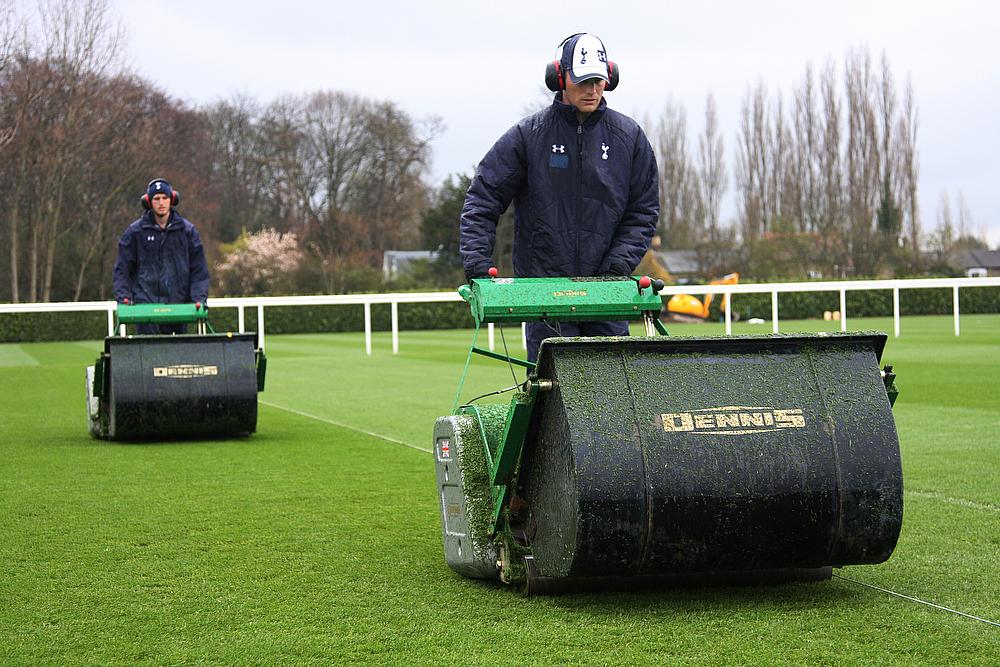
The challenge
How might we assist lawn care companies in managing their resources with the help of technology to quickly achieve their daily targets and expand the business ?
The solution
We designed a mobile application for lawn care companies to help them with creating and monitoring teams and their jobs, easily notify their employees to carry equipment on site for all the jobs, manage new and existing clients or jobs on daily basis and help employees update their job status.
Some of the primary features in the mobile application are listed below.
The process
Observations and Interviews
Persona and User journey
Defining requirements
Brainstorming solutions
Designing and evaluating wireframes
Designing final solution
User testing
Who are the users?
We decided to focus on two main user types that are involved continuously and directly in the process of resource management at Lawn care companies.
Ground Manager
Ground manager is usually the head of the lawn care companies or monitor's jobs progress on daily basis. He looks into new client's requests, machine maintenance and other business transactions.
Groundskeepers
Groundskeepers perform all the activities assigned by Ground Manager on daily basis and updates the job status by the end of day. All Groundskeepers are expected to perform all activities.
Observation and Interviews
We conducted user study with two lawn care companies by observing our users and interviewing them while they are performing several jobs like loading trailers with resources, commuting from one job site to other, updating the job status to ground manager, communicating to each other, issues faced in the process of management, and strategies adopted to tackle the problems. Our motive behind conducting observation and interviews was
- To understand their daily routine
- To identify pain points while performing different jobs
- To identify current methods of managing jobs and teams
- To identify when and where they face issues
- To identify tools they use to tackle these issues
- To understand why a different experience is required
- To understand what are the gaps in the existing process
1. Groundskeeper loading portable machines in trailer 2. Transporting fertilizers 3. List of activities handed to groundskeepers that needs to be performed as per month 4. Machines loaded on trailer 5. Mapquest to find optimized route 6. To do list handed to groundskeepers 7. List of machines and equipment 8. Mowers identifying the patterns 9. Campus divided into zones
Existing process
In the existing scenario, Ground Manager has to manage his existing clients and if he receives any new client requests, he has to accommodate it in the existing team. Sometimes he has to rework on the team if there are more client requests based on the service requested.
Once the clients are assigned to a team he informs the team to carry several equipment and tools that would be required to complete the job by checking the availability of tools. Groundskeeper has to load the trailer with equipment and tools a day before in order to complete the job on time.
Later, Ground Manager calculates the optimized route for each team using mapquest, google maps or physical map and prints the map or sends the address to team as per order. Team visits the site and informs the Ground Manager about the job completion by the end of day. Any incomplete jobs are rescheduled next day or next week by Ground Manager.
Research findings
We identified issues in their primary tasks that are carried out by them daily based on the user study and combined these notes to form Personas
Insights
Persona - Ground Manager
Persona - Groundskeeper
Challenges - Ground Manager
1
Users would like to reduce the amount of time required to group groundskeepers to form a team based on their skills and availability. Several Ground Managers has to rework on team based on the jobs everyday by calling in each groundskeeper, knowing their availability and creating a team for jobs after hours of permutation and combination.
2
Users has to spend time in planning the equipment and machines each team has to carry next day for jobs. They usually does this by evening referring to the list of available equipment, so that Groundskeeper has enough time to load the equipment on trailer and ensure fuels and maintenance.
3
User has to calculate the efficient route everyday using 'mapquest' and google maps to avoid traffic and travel time thus achieving efficiency. If there are new client requests, Ground Manager has to find a suitable team for it and then rework the optimized route for that team
4
Users struggle in getting a real time job updates due to noise at job site and unreliable communication modes to reach teams. In large organizations, tracking the progress of each team is time consuming and tedious job.
Customer journey - Ground Manager
After jotting down the challenges, I drafted the customer journey of the primary user Ground Manager so that I can discuss it with team members to visualize user's daily journey and to identify touch points and opportunities to improve the experience for Ground Manager when managing his resources.
Key requirements
-
Monitoring teams
Provide opportunity to Ground Manager to add, edit and create teams quickly from the list of available groundskeeper
-
Integration of Team status
Provide a clock in /clock out feature for Groundskeeper to record their hours and provide real time job updates to Ground Manager
-
Estimating resources
Provide a feature to view available equipment and machines and assigned resources to teams and quickly inform the teams about the resources they need to carry
-
Managing clients
Provide quick way to assign new service requests to an existing team with updated optimized route
Brainstorming solutions
I started sketching different solutions for the above key requirements, discussed it with team members and stakeholders thus listing down pros and cons of each option to determine the best fit.
We decided to go ahead with mobile application as it is portable and easily accessible to users compared to other options
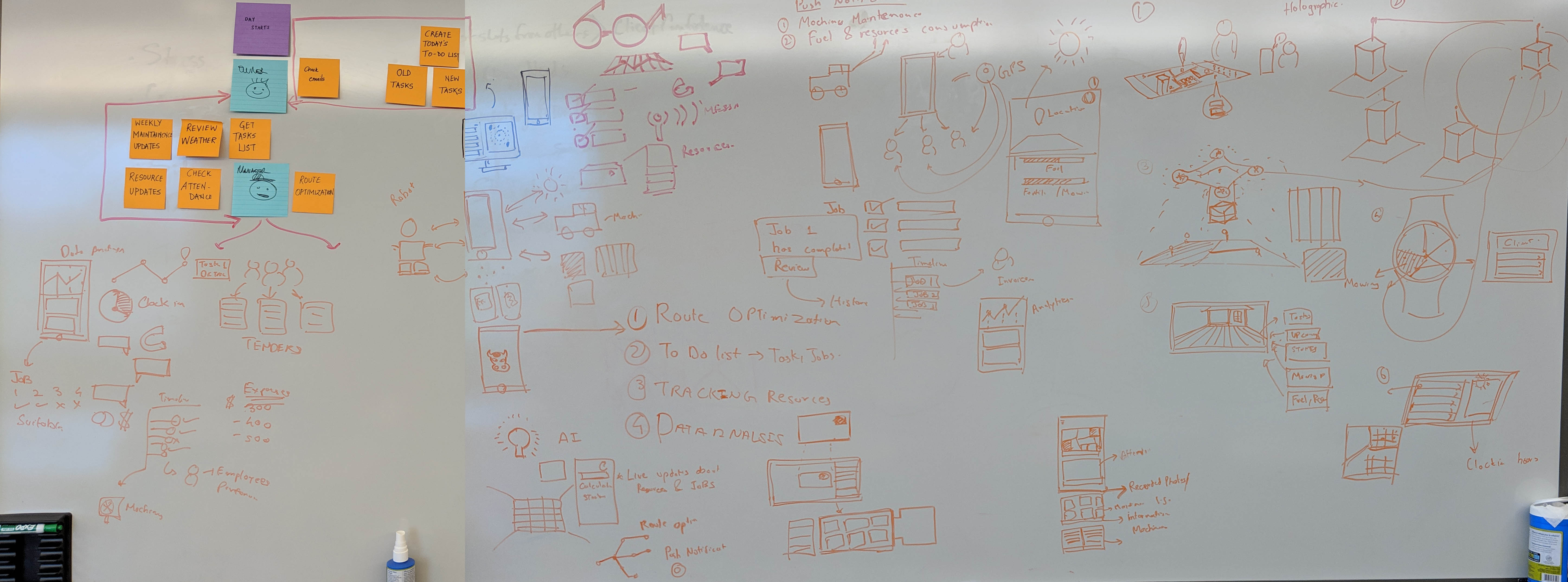
Shortlisted ideas
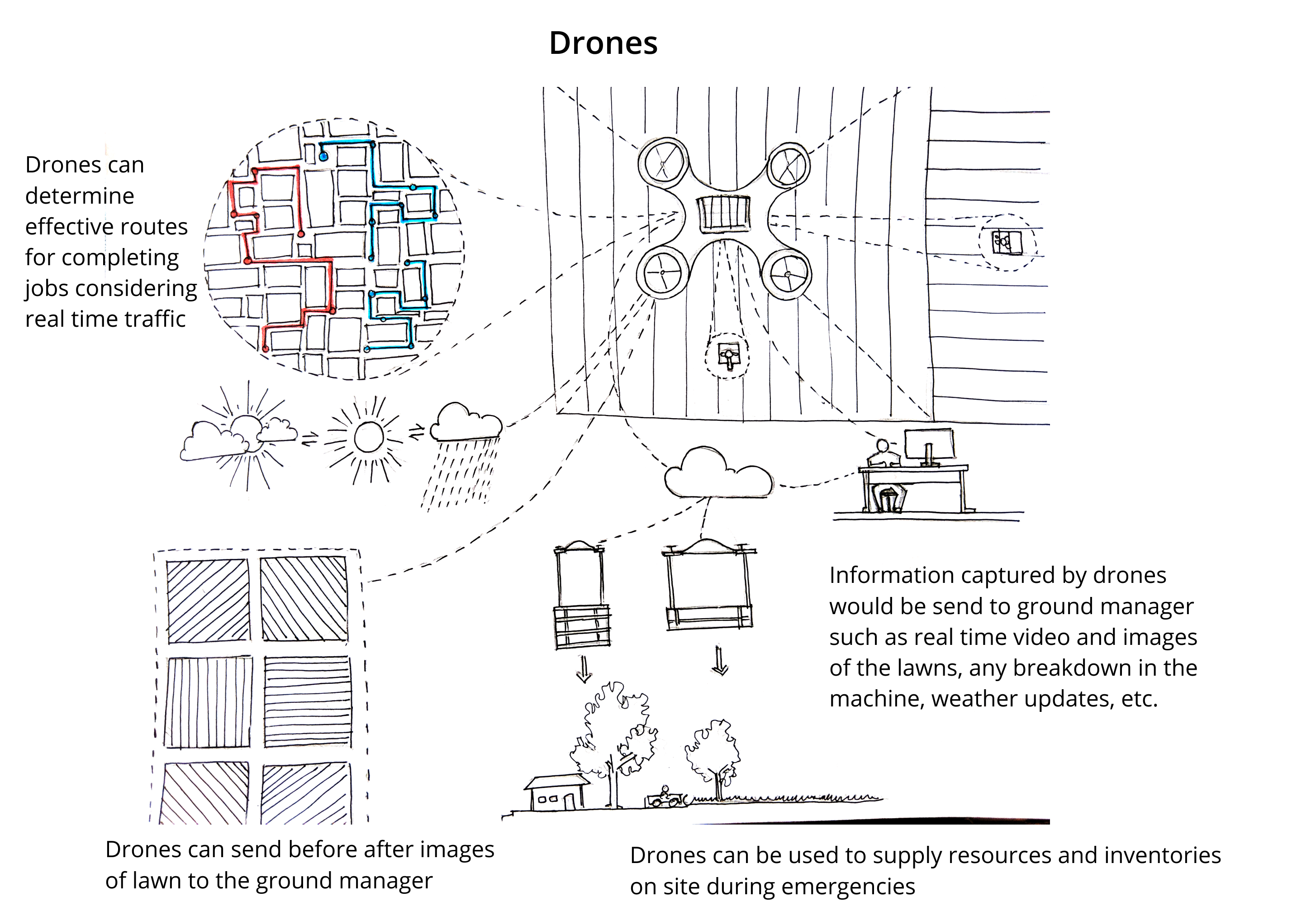
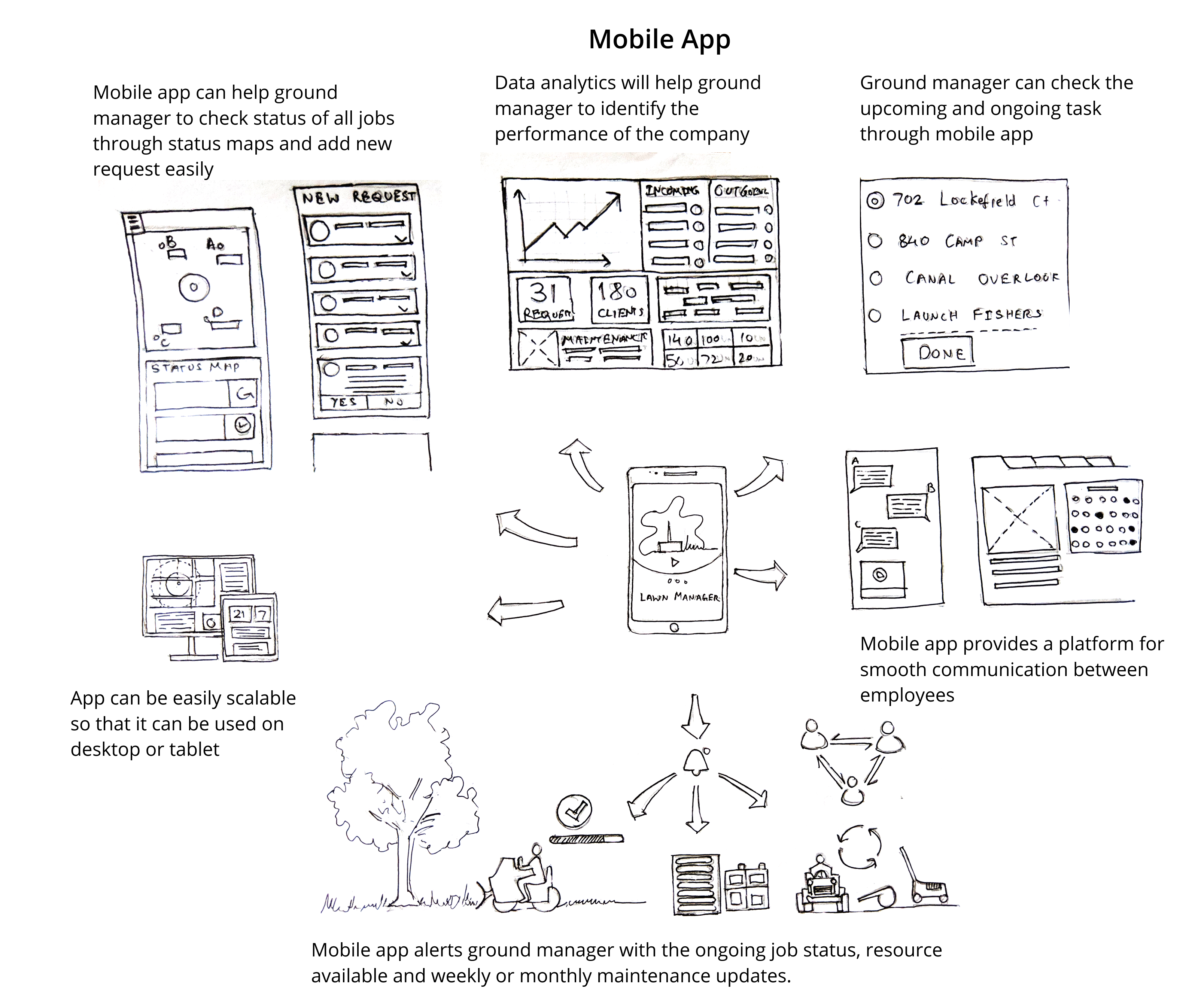
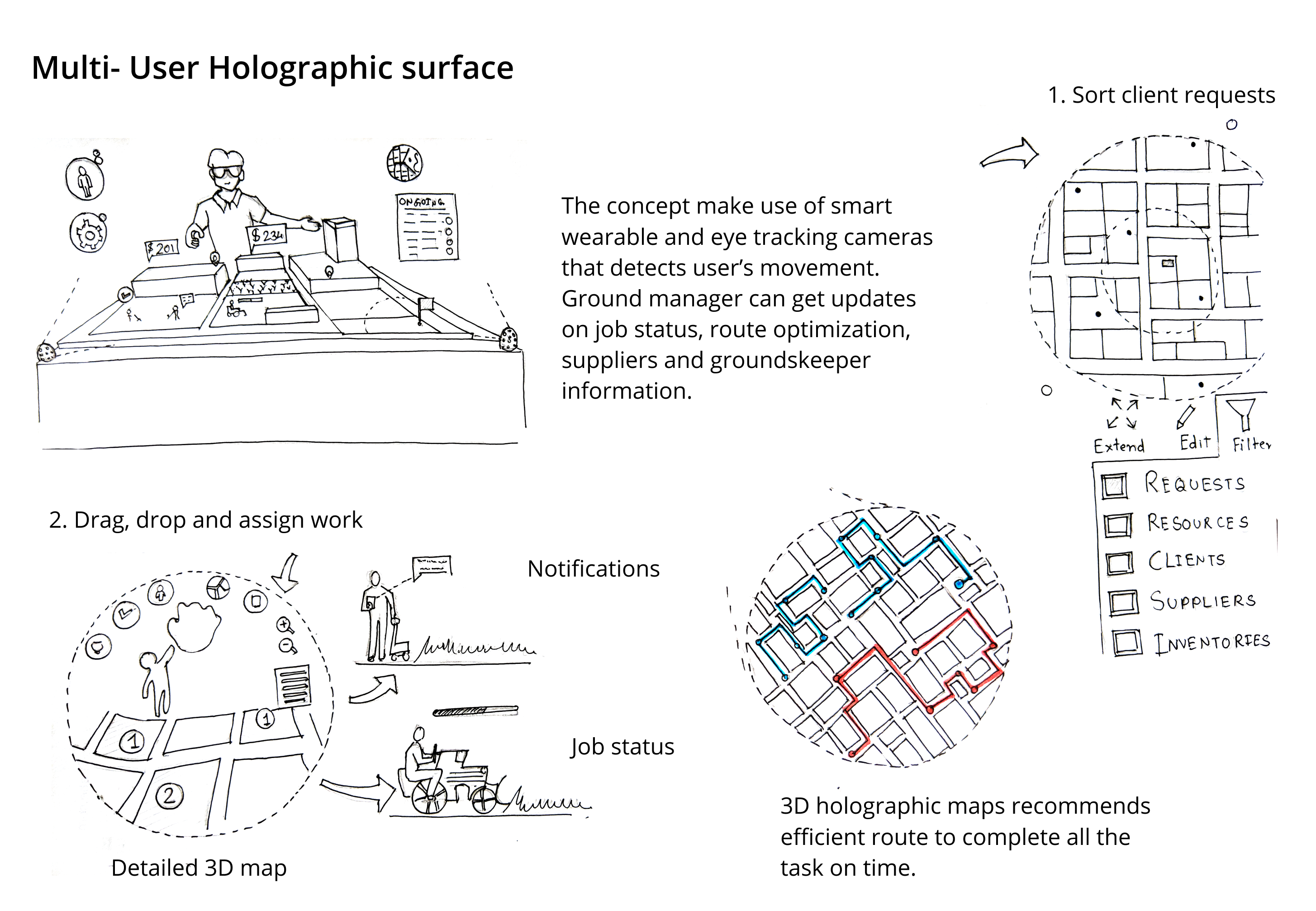
Storyboard
Once we finalized the mobile application, I decided to create storyboard to analyze the overall scenario with the mobile application and generate initial user flow or reference to create prototype.

User flow
I was engaged in the white boarding sessions extensively to create initial user flows quickly and then created initial mock ups using paper prototypes
Paper prototypes
I created paper prototypes for both the personas - Ground Manager and Groundskeeper and reviewed it with team members and stakeholder. I received their critiques on the design and incorporated it back in to low fidelity wireframes.

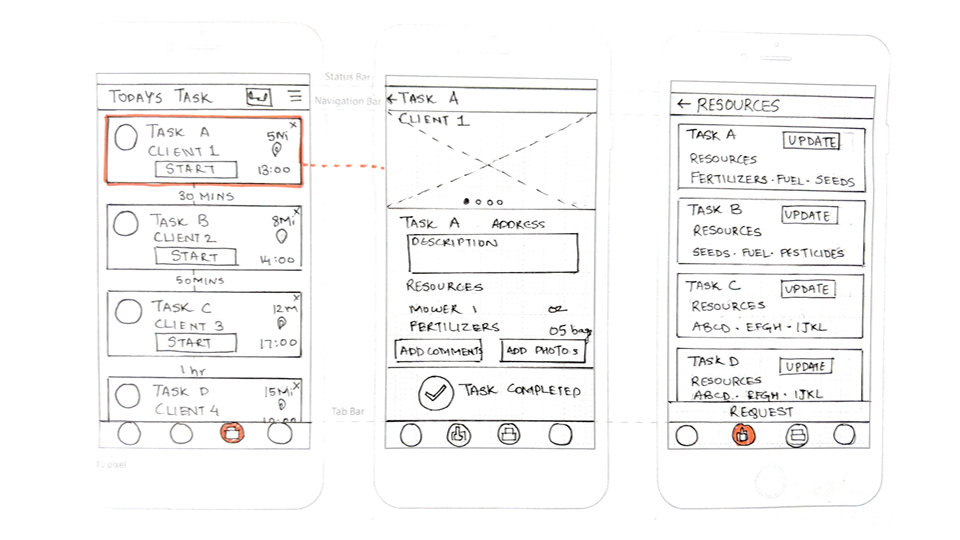

Low fidelity wireframes
I created low fidelity wireframes on the basis of the hypothesis due to dynamic interlinking between two aspects - whether a team is created first or clients are selected first.
I assumed Ground Manager select clients on the basis of proximity i.e. clients located in the same region are assigned to one team irrespective of the service requested by them to avoid long travel distances. Thus a team assigned with such jobs need to include groundskeepers of various skills.
With this in mind I designed low fidelity wireframes and evaluated it with stakeholder and users.
Evaluations
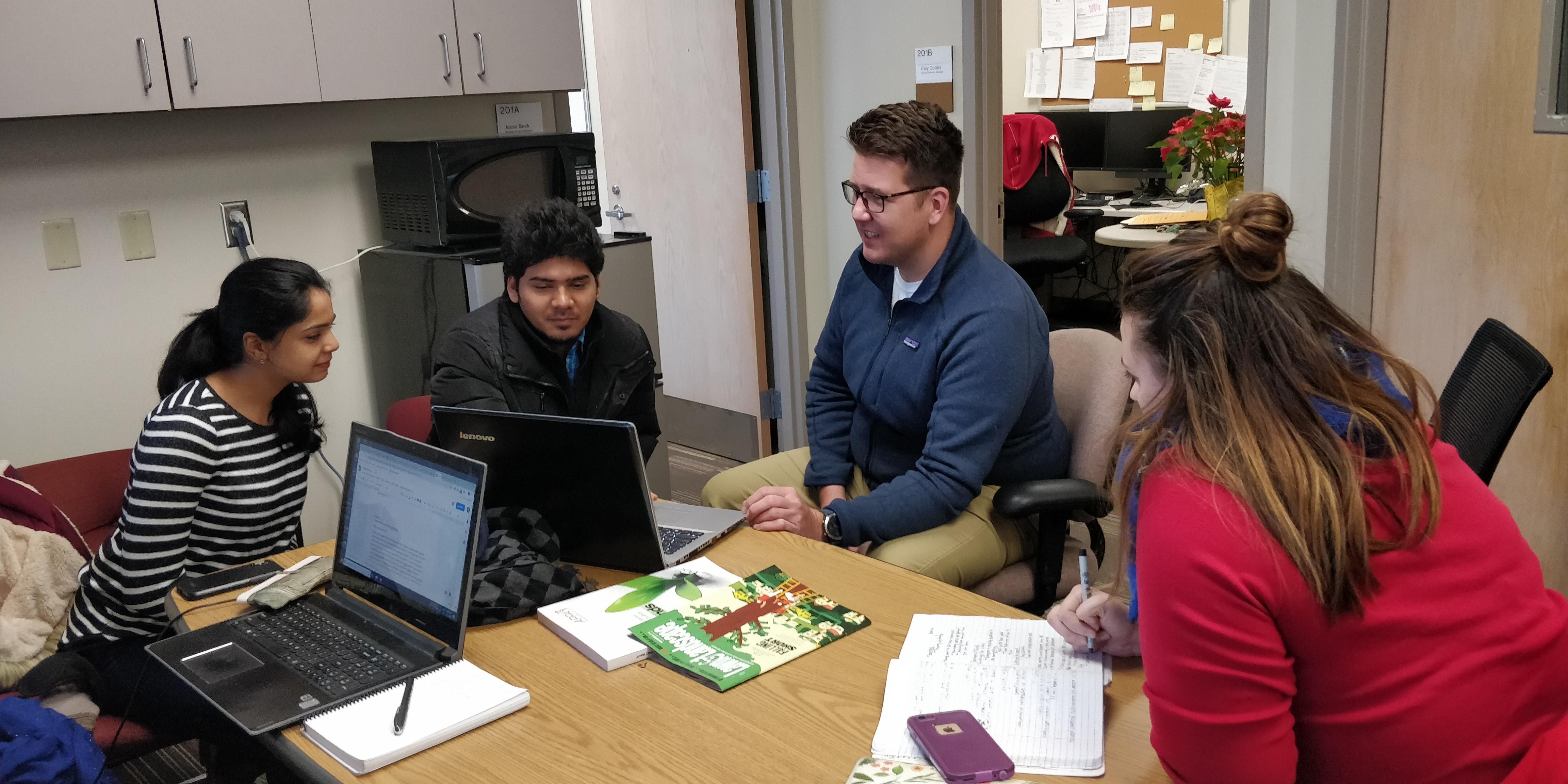
Several issues were addressed by users and stakeholders in the low fidelity wireframes. I took note of all the feedback and incorporated it in the design and came up with high fidelity wireframes.
The final solution
Evaluation
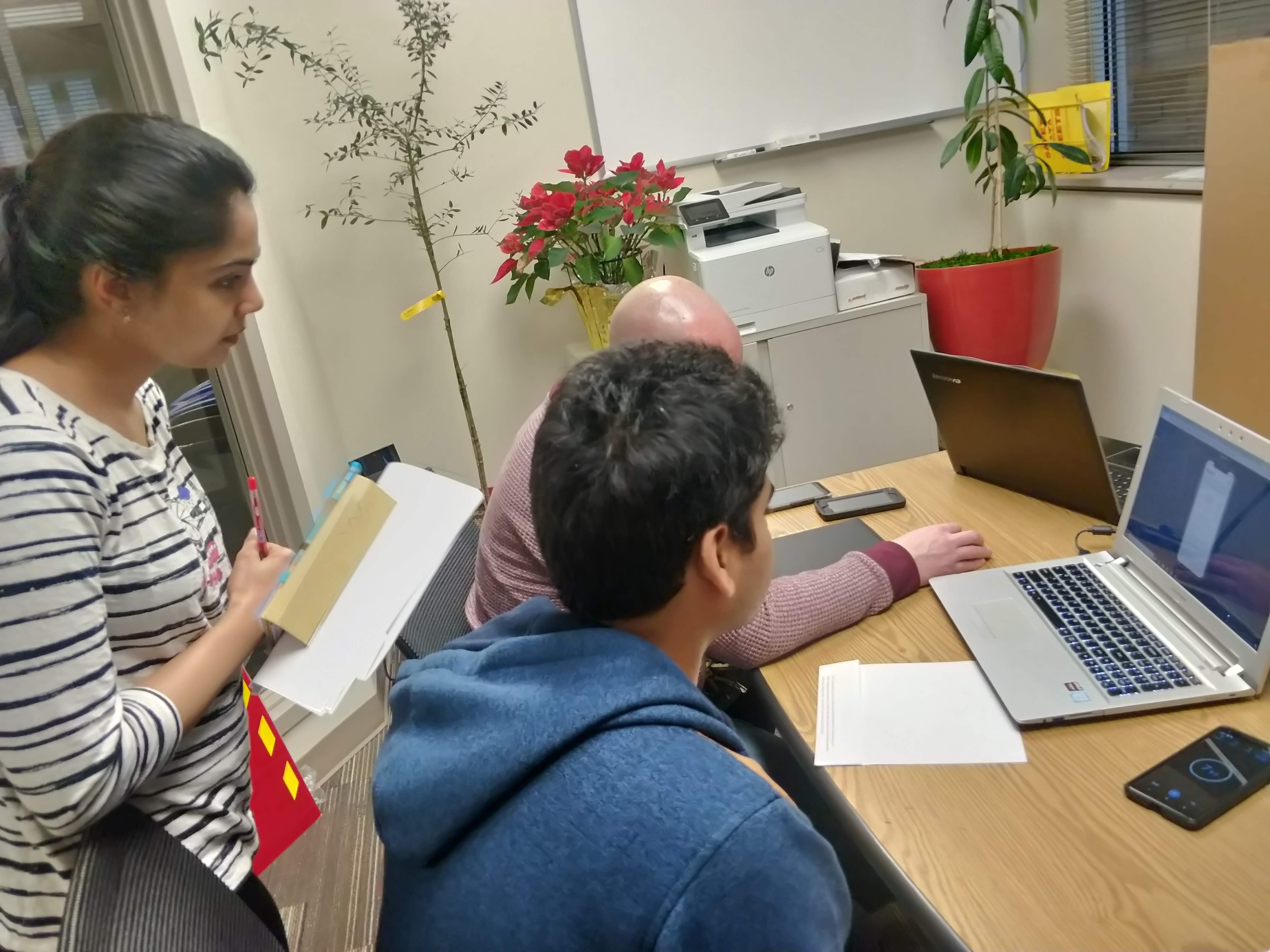
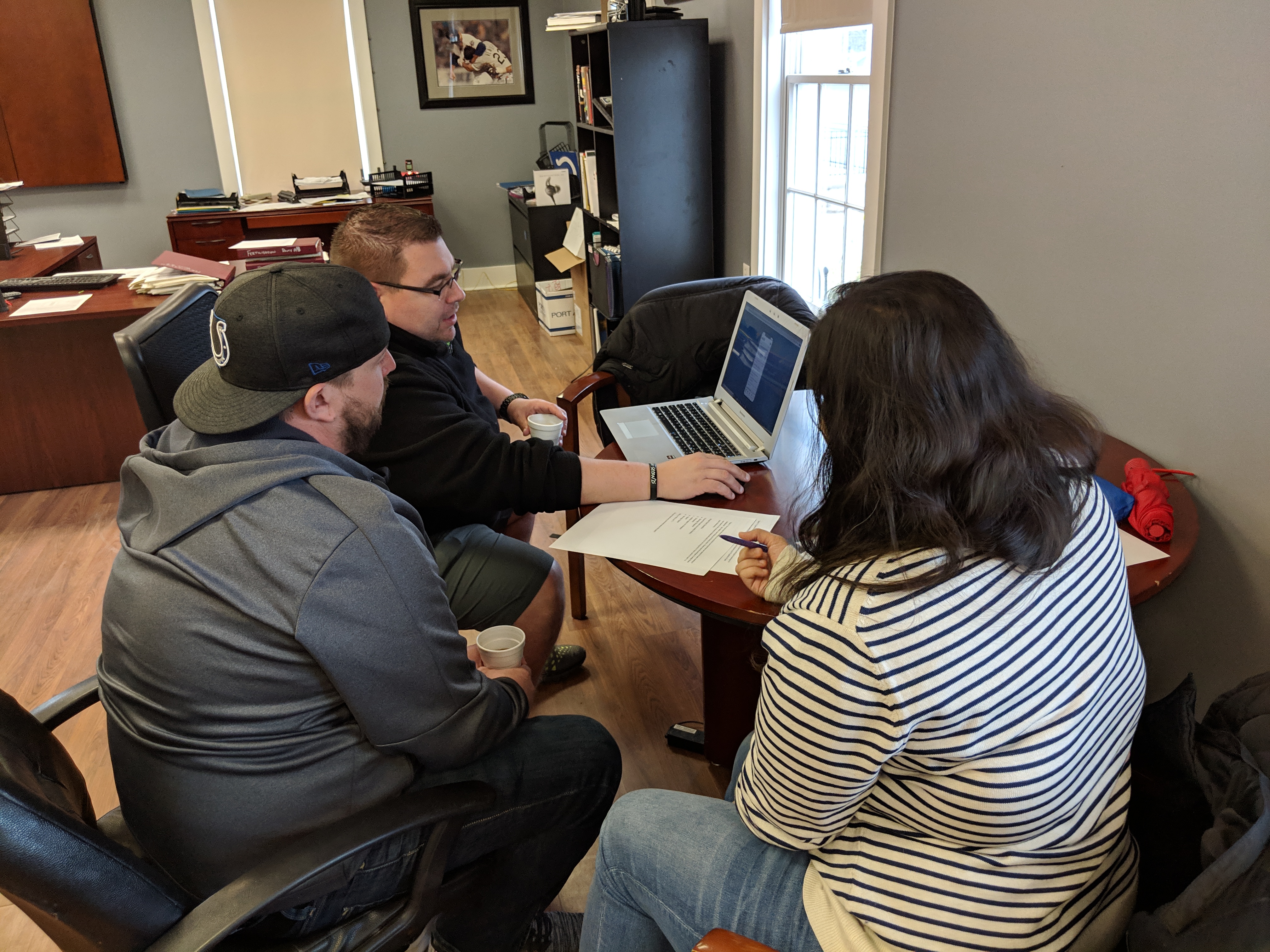
We conducted user testings with two lawn care companies and collected their opinions, thoughts and feedback on our prototype. Overall our users termed it as usable and valuable to them and recommended something like Route optimization to help them with daily tasks.
Iterations
Visual Design
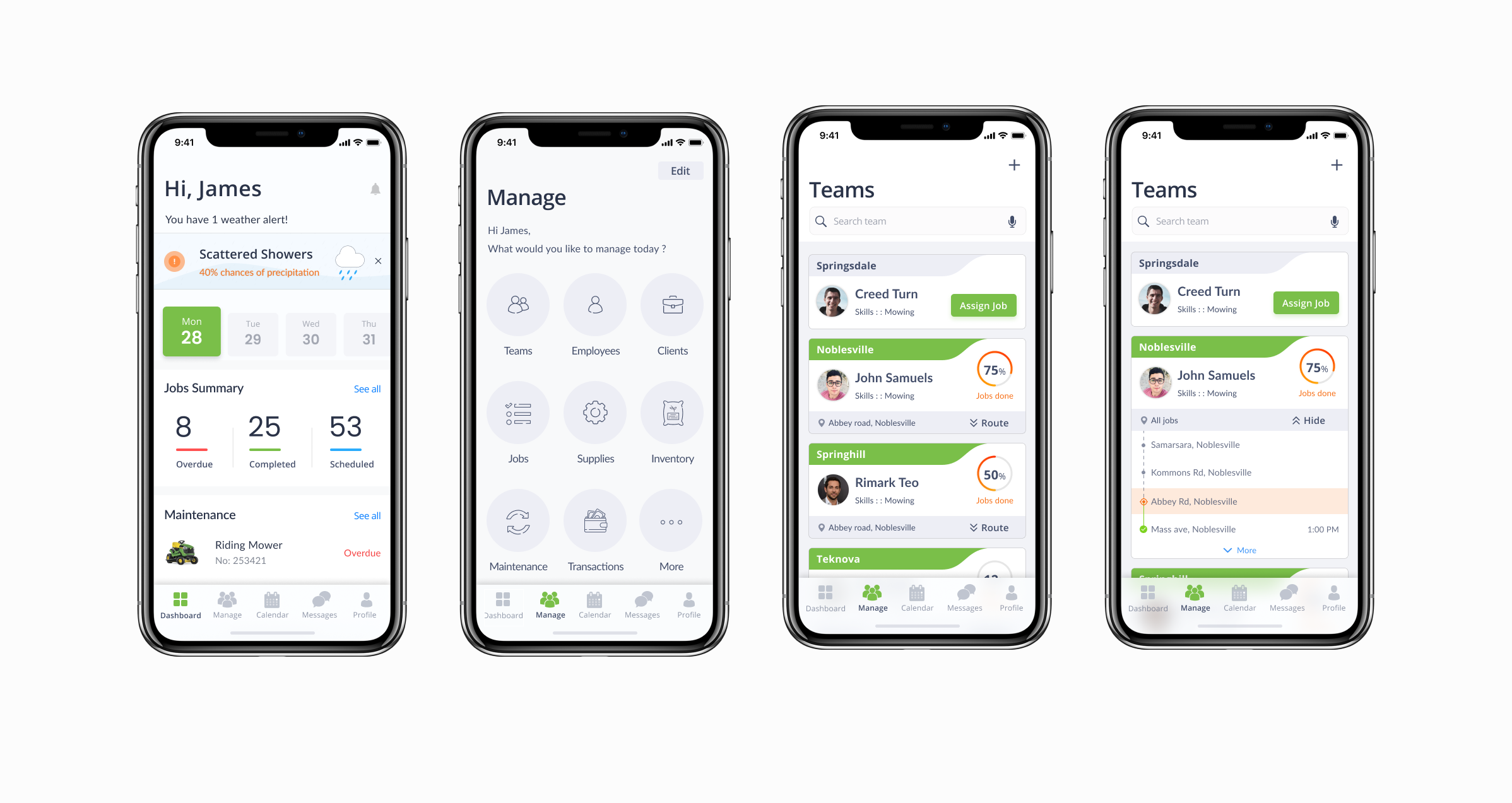
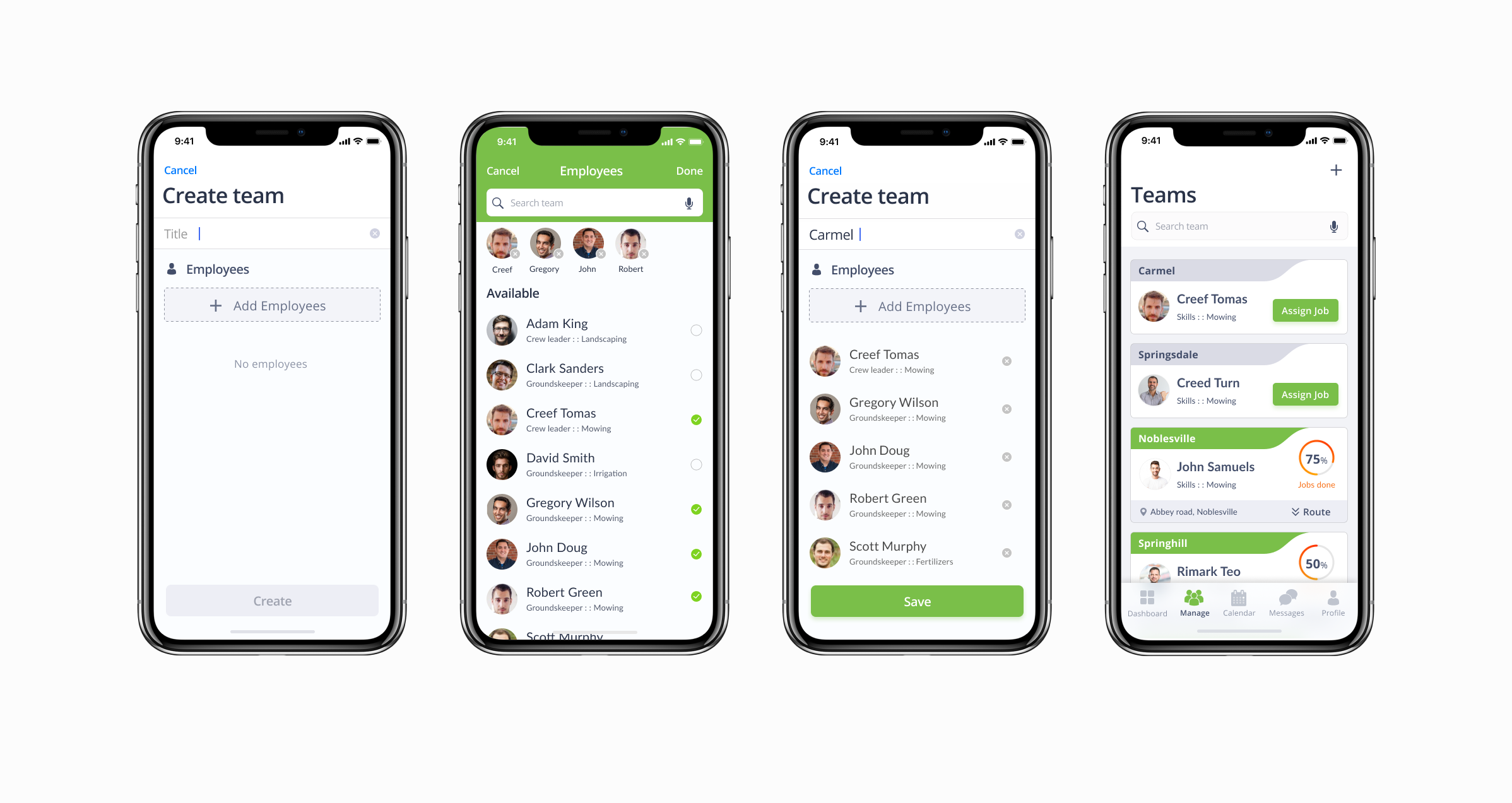
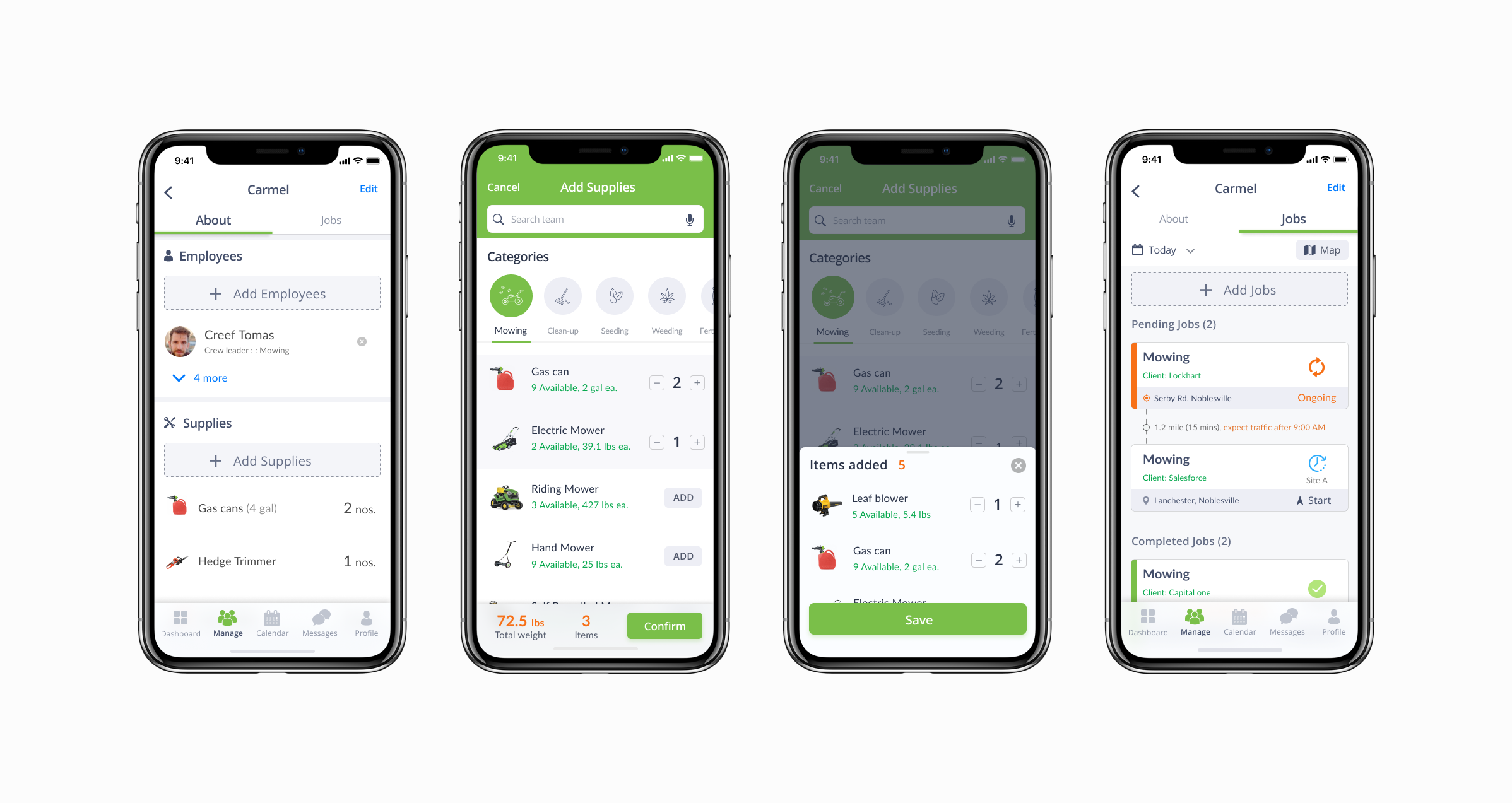
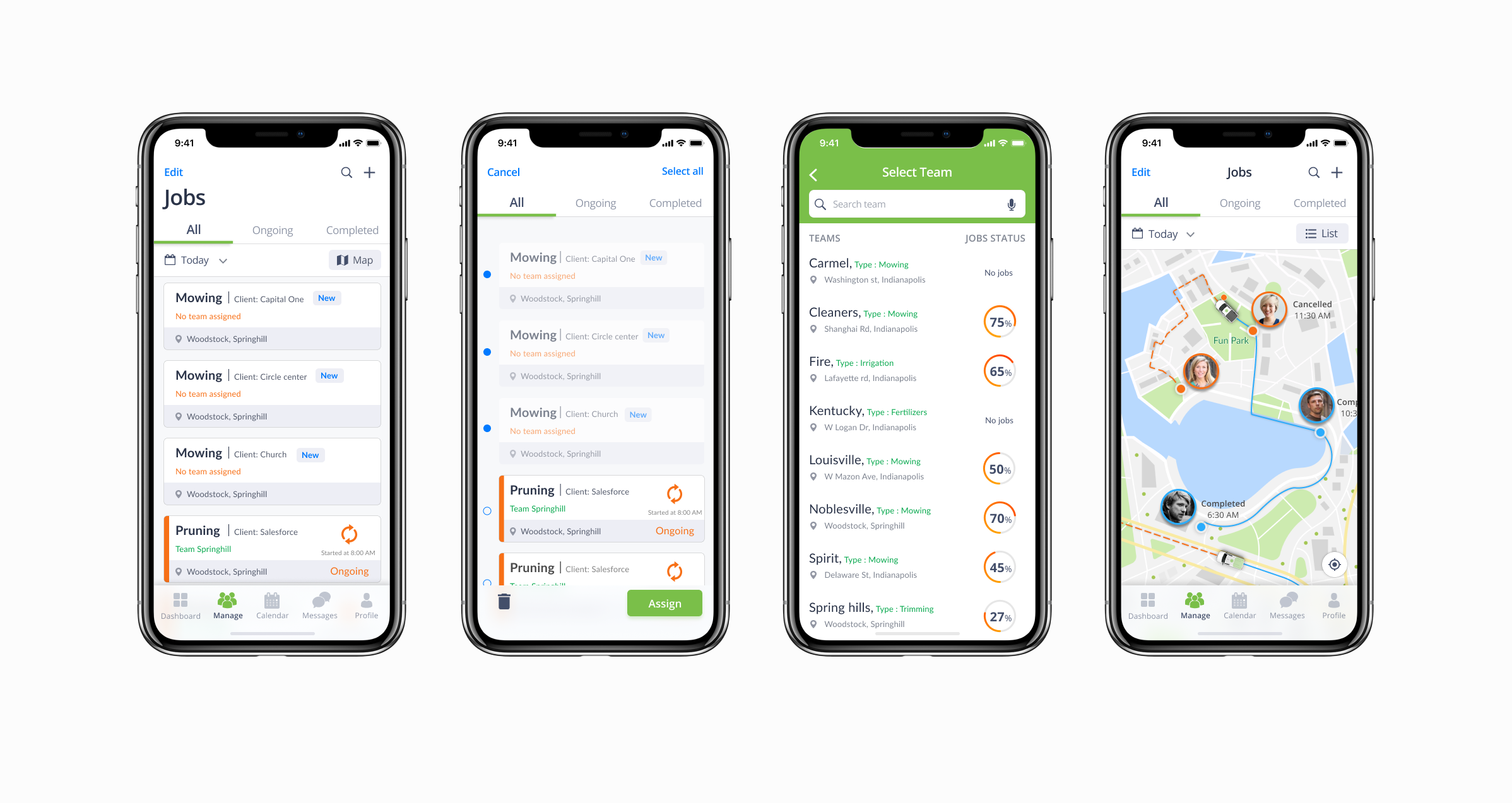
Style guide
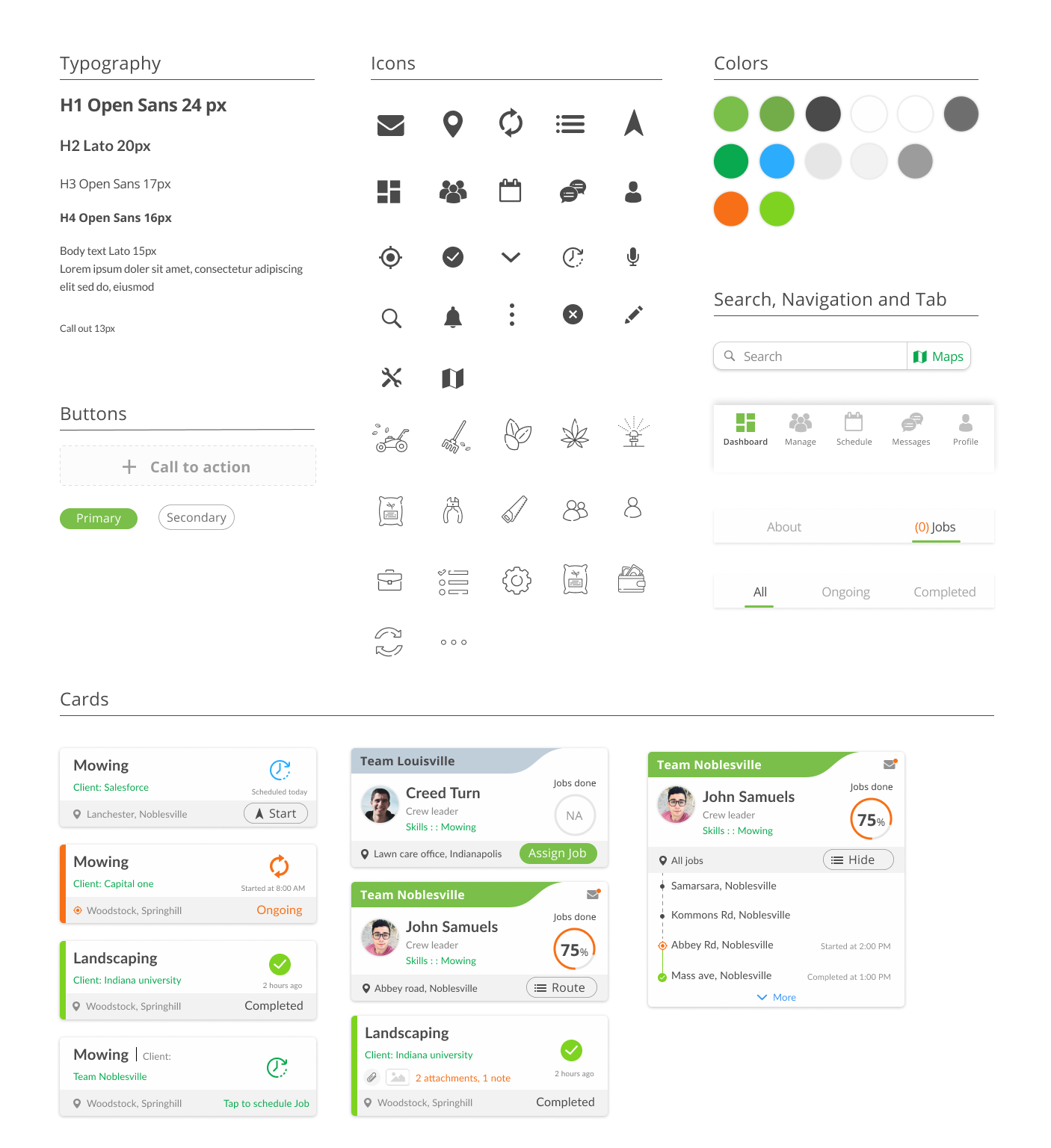
Check out other interesting projects
Lawntech
Divvyup
Respace
H2flow
Homebase
Microsoft
Previous
Next

 Linkedin
Linkedin
No Comments.